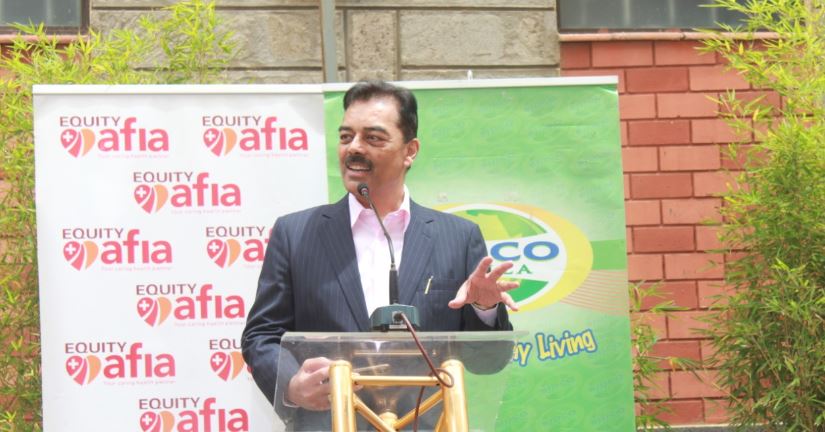
On 13th September 2022, during his swearing in ceremony, President William Ruto announced he would revert the Mombasa port clearing services back to the county, driving the final nail into the coffin of the SGR and Naivasha dry port projects.
What started as a tale of hope and promise in 2017 ended up being something close to a Shakespearean tragedy, involving the Kenyan tax payer, private investors, and the residents of Naivasha.
Initial Plans
Although the KSH 450 billion financing contract between Kenya and China remains shrouded in mystery, five years after its maiden Mombasa to Nairobi trip, and in contravention with numerous court orders, it has since been established that the project’s financing was founded on the revenues it would generate from ferrying cargo from Mombasa to Malaba through the Naivasha dry port.
Unfortunately, feasibility studies conducted by China established the Naivasha-Malaba extension was not economically feasible, at least not in the near future, leading to the unfortunate termination of the line at Suswa.
The termination made headlines throughout the country, with some media houses calling it “The Lunatic Express” and others “The Railway to Nowhere”, front page headlines the then President (Kenyatta) did not find amusing.
Development of the Naivasha inland Port
In spite of the setback, the then Jubilee government went ahead and constructed the Naivasha dry port to be used as a clearing facility for all cargo imported through Mombasa, including those destined to neighboring countries, such as Uganda and South Sudan.
In terms of size, the special economic zone extended over 1000 acres and had a capacity to hold over 700 tracks at any given time, signaling the government’s optimism as to how profitable and busy the port would soon become.
Further, to motivate other countries to set up shop, the government offered them free land in the SEZ to construct their own cargo handling infrastructure, although many of them were reluctant to do so.
Competition from Truckers
From the get go, the SGR freight services faced very stiff competition from truckers; transporting cargo on trucks was more cost and time efficient than using the SGR.
Unlike the railway, truckers delivered cargo directly to businesses, saving them the cost they would incur to move their goods from the Naivasha dry port to their business if they used the SGR.
Moreover, congestion at the inland port and time consuming clearing services made it even more undesirable for businesses to use it.
Government Interventions
To protect it from the stiff competition, the government issued a directive requiring all cargo imported through Mombasa to be transported through the SGR to the Naivasha dry port.
This move was beneficial to the SGR because it increased its revenues, which were majorly anchored on the revenues generated from transporting cargo.
In fact, revenues generated from passengers made up only 20%, with cargo contributing around 80% of the railway’s annual revenues 2021/2022.
Job Losses in Mombasa
According to a study done by the University of Nairobi in 2019, the directive was expected to shrink the economy of Mombasa by 16.1%, causing over 8000 job losses.
As expected, in just 2 years, the county had lost over Ksh 17 billion, which represented 8.4% of the county’s annual revenues.
Moreover, logistics companies moved their operations to Naivasha, wiping out about 3000 jobs from the county, mostly in the trucking sector.
Political Pressure
The hit on the county’s economy and consequent job losses caused jitters among the county’s political class as the 2022 general elections approached.
Collectively, the two major alliances agreed there was a need to revert the port services back to the county.
In fact, the pledge formed the basis of the entire county’s elections, and although the president’s party lost the gubernatorial bid, he was eager to fulfill his promise, perhaps to win over the county’s voters ahead of the 2027 general elections.
The desire to win the close to 600, 000 voters culminated in the presidential declaration that reverted all the port services back to the county.
Jitters among Neighbors
The Naivasha dry port’s free fall started even before the declaration. Already, there was hesitation among our neighbors, particularly South Sudan and Uganda to establish clearing services at the Naivasha inland port.
The then PS for Transport admitted there was a slow uptake due to “unpreparedness” despite government issuing these countries with title deeds as early as the first quarter of 2022.
What the PS did not want to admit was that the real reason for the slow uptake was economic; Kampala had previously expressed plans to import cargo through the Dar Salaam port instead of Mombasa because it would be more economical, although it was yet to make any firm commitments as of September 2022.
Similarly, South Sudan, which imports all her cargo through the Mombasa port proposed similar plans to find alternative routes for her cargo, but unlike Uganda, it committed to investing in a clearing facility in Djibouti by purchasing 3 acres of land in the country’s port in September 2022.
SGR’s Bleak Future
The presidential directive, expansion of the Mombasa Nairobi highway, and lack of commitment from neighboring countries paints a bleak future for the SGR, a project which experts have already described as a white elephant.
As mentioned, the railway line generates 80% of its revenues from transporting Cargo to the Naivasha dry port.
Although the directive did not order the closure of the dry port, it essentially did by denying it much needed revenue.
Without the monopoly, most business people will revert to using trucks, and if cargo revenue takes a hit, the chances of SGR ever breaking even will be very minimal, especially considering that it has not met its operational costs since its inception, even with the directive to monopolize it.
Moreover, the government has initiated plans to expand the Mombasa-Nairobi highway into a dual carriage, which will reduce the traffic caused by truckers moving cargo from Mombasa to Nairobi and vice versa. Expanding this road will make transporting cargo on trucks even more efficient, minimizing the chances of business people reverting to using the SGR.
The directive also doomed the Naivasha dry port even before it gained proper traction.
With limited cargo, it will be difficult for the management to finance its operations, leaving the President with two choices: finance it using tax payers’ money or end operations completely.
If he chooses the former, it will become an endless money pit that will worsen the economy, following the Central Bank governor’s revelations that we are using about 45% of our revenues to pay debt.
On the other hand, if he chooses to let it suffer its impending natural death, it will remain an eye sore and a constant reminder to Kenyans about the risks associated with undertaking unevaluated capital intensive flag ship infrastructural projects.
Investor Losses
Many investors will also lose money following the government’s policy change. When the dry port was created, investors rushed to Naivasha to buy properties and erect apartment blocks, hotels, and entertainment joints for the truckers and business people who would frequent the port.
These investors will lose their investments because of the reduced traffic, and the silent town that was starting to roar to life will slowly revert to its former state.
Conclusion
The truth of the matter is that what started as a tale of hope and promise will slowly become the most painful tragedy the Kenyan tax payer has ever suffered.
The KSH 450 billion flagship project, which was once the pride of the country will become, if it is not already, a white elephant.
To the people of Naivasha and private investors, the dry port will go from a promising business hub to an eye sore that will haunt their memories even in the near future.
Therefore, the SGR and Naivasha dry port story should be classified as a tragedy, up there with other tragic literally works, such as Romeo and Juliet and Julius Ceasar by William Shakespeare.
Githae Mwangi is a political and current affairs commentator.








